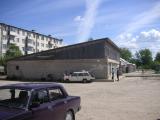|
|
Articles
/
Cult (worship) stones
Cult (worship) stonesAuthors
Plotkin, Konstantin Moiseyevich
Persons
Feodosy, archbishop
Kurbatov, Aleksandr Valeryevich Lapshin, Vladimir Anatolyevich Lebedev, Gleb Sergeyevich Makary, metropolitan Ryabinin, Yevgeny Aleksandrovich Saksa, Aleksandr Ivanovich Geography
Leningrad Oblast, the/Volosovo District/Bolshaya Vruda Village
Leningrad Oblast, the/Luga District/Bolshoye Konerezye Village Topographical landmarks/Konevets, Island Topographical landmarks/Ladoga Lake Leningrad Oblast, the/Priozersk District Historical Toponyms/Veliky Novgorod/Vodskaya Pyatina ("Fifth") Bibliography
Курбатов А.В. Культовые камни и почитаемые источники на территории Ленинградской области // Лапшин В.А. Археологическая карта Ленинградской области. Ч. 2 (приложение). СПб. 1995, С.179-193
Лебедев Г.С. Памятники урочища «Священка» на оз. Врево в Верхнем Полужье // Археология и история Пскова и Псковской земли: Тезисы конференции. Псков. 1987. С. 67-69, С. 67-69 Рябинин Е.А. От язычества к христианству (по материалам средневекового прошлого Северо-Западной Руси) // Культурное наследие Российского государства. Вып. III. СПб. 2002., С. 130-149 Subject Index
"Friday", a stone
"Kon-kamen" ("Horse-stone"), a natural monument Mentioned in articles:
|
|






